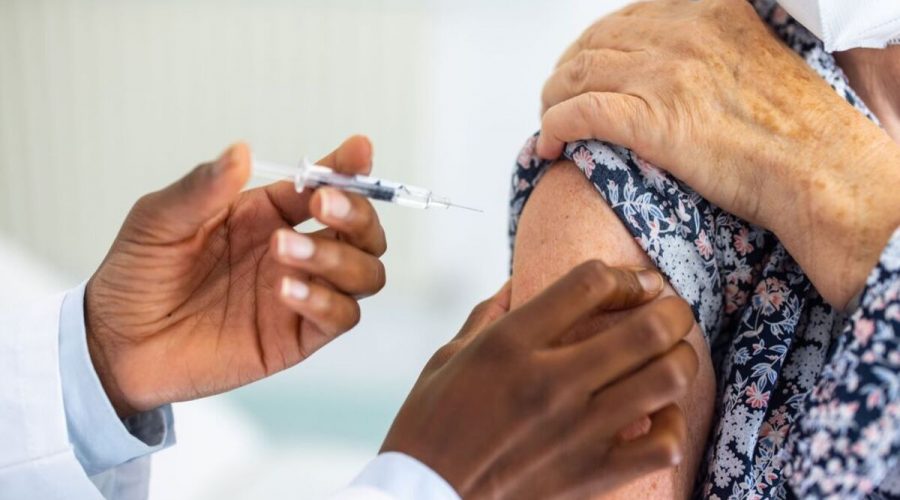Skin cancer vaccine is successful in preventing relapses, study finds
Skin cancer: Dr Chris outlines the signs of a melanoma
A new study looked into whether an mRNA vaccine could reduce the likelihood of melanoma returning in cancer patients. The trial involved cancer patients who had undergone surgery to have their melanoma – a type of skin cancer that can spread – removed from their lymph nodes or other organs. All participants were at high risk of having the disease return in areas distant from the original site of cancer.
Among 107 participants injected with the experimental vaccine mRNA-4157/V940 and the immunotherapy pembrolizumab, cancer returned for around 22 percent of people.
In comparison, 40 percent of participants treated with pembrolizumab on its own had the cancer return.
Senior investigator Professor Jeffrey Weber, of New York University, commented on the research.
“Our phase 2b study shows that a neoantigen mRNA vaccine, when used in combination with pembrolizumab, resulted in prolonged time without recurrence or death compared with pembrolizumab alone.”
1757545

The results presented at a meeting of the American Association for Cancer Research in Orlando provides preliminary reassurance for the use of the mRNA vaccine.
Larger studies, which are already being planned, will be needed to bolster the findings.
The mRNA vaccine works by teaching the body’s immune system to recognise cancer cells as different from normal cells.
In the research project, the most common side effect felt by participants who had the mRNA vaccine was fatigue.
Don’t miss…
‘Tremendous promise’ for new vaccines for heart disease, says expert[LATEST]
Four signs your blood pressure ‘is life-threatening’ – expert advice[SYMPTOMS]
Paul O’Grady suffered from numerous health woes before his death[CELEB HEALTH]
Melanoma skin cancer
The NHS warns the “main cause” of this dangerous type of skin cancer is “ultraviolet light, which comes from the sun and is used in sunbeds”.
A new mole, or a change in an existing mole, could be a sign of melanoma.
Do look for moles that have “an uneven shape or edges”, as “normal moles are usually round with smooth edges”.
Also take note of the colours within a mole, as two or more colours could be indicative of a cancerous lesion.

Melanomas also tend to be bigger than non-cancerous moles, spanning more than 6mm wide.
It’s best to alert your doctor if you notice that your mole is changing over time.
The NHS adds “other signs to look out for”, such as:
- Swollen and sore
- Bleeding
- Itchy
- Crusty.
“Also tell them if you or a member of your family have had skin cancer in the past,” the health body advises.

Urgent referrals typically has a two-week waiting time to be seen by a specialist.
However, even if you are sent to a specialist, it’s a precautionary measure.
“The specialist may also cut out the mole and a small area of surrounding skin so it can be sent to a lab and checked for cancer,” the NHS adds.
You should get the results of the excision biopsy within two weeks.”
Source: Read Full Article
